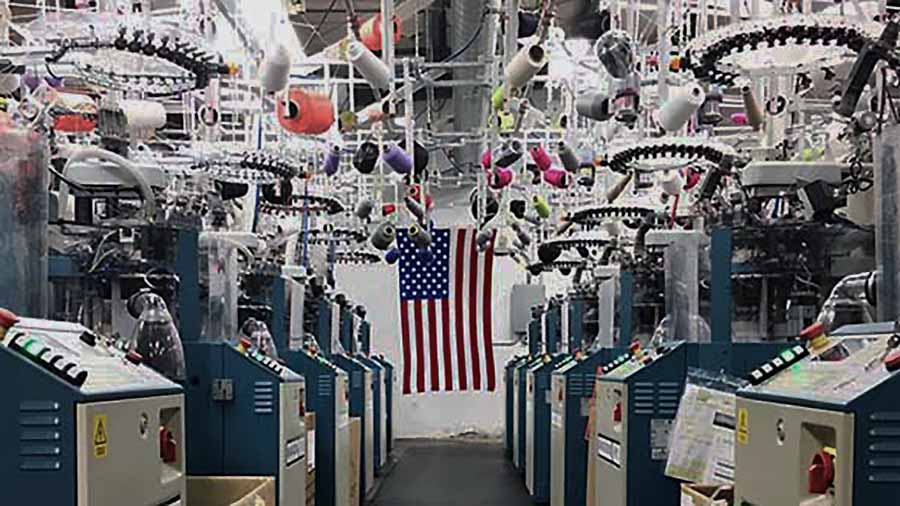Perhaps the uptick in economic activity in the U.S. expected by the White House after the first few rounds of tariffs against trading partners was a bit too rosy – or misguided. To be fair, the process of re-shoring the manufacturing process for U.S. brands and manufacturers will certainly take time as companies re-source, re-tool and and re-hire to bring the manufacturing process closer to home again. And then there is the issue with raw materials and components that are heavily managed and regulated by China, or metals like steel, copper and aluminum that are now carrying tariffs that have essentially doubled to 25 percent to 50 percent.
The Institute for Supply Management (ISM) Manufacturing Business Survey Committee (Committee) is reporting that economic activity in the manufacturing sector contracted in July for the fifth consecutive month, following a two-month expansion preceded by 26 straight months of contraction, based on ISM’s survey of the country’s supply executives.
The latest Manufacturing ISM Report On Business, the report issued on August 1, 2025 by Susan Spence, MBA, chair of the Committee, indicated that the U.S. manufacturing sector contracted in July for the fifth consecutive month after two months of expansion preceded by 26 months of contraction.
“The Manufacturing PMI registered 48 percent, 1 percentage point lower compared to the 49 percent reported in June,” noted Spence. “Of the five subindexes that directly factor into the Manufacturing PMI, only one (Production) is in expansion territory, down from two in June. The slowing of supplier deliveries in previous months reversed course, with a 4.9 percentage point index decrease indicating a drawdown of manufacturing inventories and easing port congestion. The Employment Index decreased and it remained with New Orders in contraction territory. None of the six biggest manufacturing industries registered growth in July.”
A Manufacturing PMI above 42.3 percent, over a period of time, generally indicates an expansion of the overall economy. Therefore, the July Manufacturing PMI indicates the overall economy grew for the 63rd straight month after contracting in April 2020.
A reading above 50 percent indicates that the manufacturing sector is generally expanding; below 50 percent indicates that it is generally contracting.
“The past relationship between the Manufacturing PMI and the overall economy indicates that the July reading (48 percent) corresponds to a change of +1.6 percent in real gross domestic product (GDP) on an annualized basis,” said Spence.
The New Orders Index contracted for the sixth month in a row following a three-month period of expansion; the figure of 47.1 percent is 0.7 percentage point higher than the 46.4 percent recorded in June.
The Production Index (51.4 percent) for July is 1.1 percentage points higher than June’s figure of 50.3 percent.
The Prices Index remained in expansion, or increasing, territory, registering 64.8 percent, down 4.9 percentage points compared to the reading of 69.7 percent reported in June.
The Backlog of Orders Index registered 46.8 percent, up 2.5 percentage points compared to the 44.3 percent recorded in June.
The Employment Index registered 43.4 percent, down 1.6 percentage points from June’s figure of 45 percent.
The Supplier Deliveries Index indicated faster delivery performance after seven consecutive months in expansion, or slower, territory. The reading of 49.3 percent is down 4.9 percentage points from the 54.2 percent recorded in June 2025. Supplier Deliveries is the only ISM Report On Business index that is inversed; a reading of above 50 percent indicates slower deliveries, which is typical as the economy improves and customer demand increases.) “The Supplier Deliveries Index indicated faster deliveries as supply chain performance improved and sluggish demand continued. Prices continued to increase, but at a slower rate. The Imports Index remained in contraction but moved upward slightly,” she said.
The Inventories Index registered 48.9 percent, down 0.3 percentage point compared to June’s reading of 49.2 percent. “The Inventories Index moved marginally further into contraction territory after expanding in April, as companies work to reduce or adjust inventory to better align with demand,” Spence noted.
The New Export Orders Index reading of 46.1 percent for July is 0.2 percentage point lower than the reading of 46.3 percent registered in June.
The Imports Index registered 47.6 percent, 0.2 percentage point higher than June’s reading of 47.4 percent.
“In July, U.S. manufacturing activity contracted at a faster rate, with declines in the Supplier Deliveries and Employment Indexes contributing as the biggest factors in the 1-percentage point loss of the Manufacturing PMI,” Spence continued.
She said the demand indicators improved, with the New Orders and Backlog of Orders indexes contracting at slower rates, while the Customers’ Inventories and New Export Orders indexes contracted at slightly faster rates. A “too low” status for the Customers’ Inventories Index is usually considered positive for future production.
“Regarding output, the Production Index increased month-over-month to move further into expansion territory, however; the Employment Index dropped further into contraction as panelists indicated that managing head count is still the norm at their companies, as opposed to hiring. The mixed indicators in output suggest companies still being cautious in their hiring even with an increase in production.
Inputs (defined as supplier deliveries, inventories, prices and imports), on net, declined further into contraction territory.
Placer.ai, a research and analytics firm focused on measuring foot traffic trends at retail, restaurants and other industrial locations, indicated a flurry of activity around the manufacturing sector in July.
“Following a period of caution in May and June, U.S. industrial manufacturing facilities saw a significant surge of activity in July 2025,” the company noted in a recent blog post. “As we’ve noted previously, many manufacturers experienced an increase in visits during March and April to build inventory ahead of initial tariff implementation dates, followed by a normalization period in May and June as businesses adopted a ‘wait-and-see’ approach. However, with the hard deadline of August 1st for new, widespread tariffs, July was marked by a dramatic uptick in visits from both employees and logistics partners as companies made a last-ditch effort to maximize output and shipments.”
It appears on the surface that foot traffic was up in and around these facilities in July, along with the ISM Production Index, Prices Index, Employment Index, and Import Index, all indicating expansion, but other key indicators such as the New Orders Index indicated contraction. The Placer.ai data may be telling an interesting story about the pre-tariff ramp-up, especially working up that August 1 deadline. Business seemed to be going out the door in July but was hindered by slow intake of orders, materials and inventory moving forward. The traffic and indices for August may be quite telling.
“Looking at the manufacturing economy, 79 percent of the sector’s gross domestic product (GDP) contracted in July, up from 46 percent in June. Notably, 31 percent of GDP is strongly contracting (registering a composite PMI of 45 percent or lower), up from 25 percent in June. The share of sector GDP with a PMI at or below 45 percent is a good metric to gauge overall manufacturing weakness. Of the six largest manufacturing industries, none expanded in July, compared to four in June,” Spence noted.
The seven manufacturing industries reporting growth in July, listed in order, are:
- Apparel, Leather & Allied Products
- Plastics & Rubber Products
- Nonmetallic Mineral Products
- Textile Mills
- Miscellaneous Manufacturing
- Furniture & Related Products
- Primary Metals
The 10 industries reporting contraction in July, listed in order, are:
- Printing & Related Support Activities
- Paper Products; Chemical Products
- Machinery; Wood Products
- Fabricated Metal Products
- Computer & Electronic Products
- Transportation Equipment
- Electrical Equipment, Appliances & Components
- Food, Beverage & Tobacco Products
Commodity Pricing and Supply
- Commodities Up in Price: Aluminum (20); Aluminum Products, Brass Products, Copper, Copper Products, Corrugated Boxes (5).Electrical Components (6), Electronic Components (6), Fabricated Metal Components, Freight, Polypropylene, Steel (6), Steel, Stainless (5), Steel Products (5), and Wire Products
- Commodities Down in Price: Corn, Natural Gas, Ocean Freight, and Soybean Meal
- Commodities in Short Supply: Electrical Components, Electronic Components (5) and Rare Earth Magnets
Placer.ai said the measured flurry of activity was particularly intense in highly interconnected sectors like auto manufacturing, industrial machinery, and metals processing, all of which were vulnerable to tariffs on imported raw materials and components.
“Metals processing plants, for example, ramped up operations to convert as much raw steel and aluminum as possible before their costs increased,” the firm indicated. “In turn, auto and industrial machinery manufacturers accelerated their own production lines, pulling in vast quantities of both processed metals and specialized foreign parts to build up inventory before the new duties could disrupt their supply chains.”
The company said the final pre-tariff rush was evident in the Placer.ai data: the increase in employee visits to factories signaled that production lines were running at high capacity, while a sharp rise in visits from logistics partners – like truckers and other carriers – indicated a massive push to move finished goods and components through the supply chain before the August 1st implementation date.
















